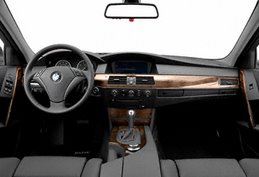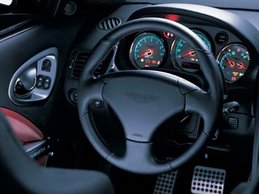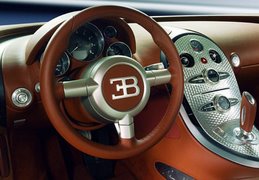 Hummer H3 - For many, that's the whole point of a Hummer—flaunting its assault-vehicle styling. But there's a special capability beneath the swagger. When the going gets tough, Hummers get going. For fording streams, climbing over treacherous rocks, and bulling through the brush, Hummers saunter in where few large vehicles dare.
Hummer H3 - For many, that's the whole point of a Hummer—flaunting its assault-vehicle styling. But there's a special capability beneath the swagger. When the going gets tough, Hummers get going. For fording streams, climbing over treacherous rocks, and bulling through the brush, Hummers saunter in where few large vehicles dare.A good off-roader is built on two basic ideas: Don't get the bottom hung up on terrain, and don't lose traction. On that first requirement, the H3's approach and departure angles are somewhat less heroic than those of the H2, and its 9.1-inch ground clearance is 0.9 less, but few SUVs can match them nonetheless. In the traction department, all H3s have full-time all-wheel drive with a locking center differential and an electrically controlled low range.
Unlike the H2, which has many plastic body parts, the H3 is mostly steel, even the hood. Plastic forms the overfenders, the bumper covers, and the "airbox features" (you know, those rectangular lumps just forward of the A-pillars). Whereas the H2 fakes its airboxes with upside-down plastic cake pans, the H3 vents the engine compartment through them.
The H3 convincingly struts the full Hummerness costume on the outside, but it could pass for a nicely trimmed SUV inside, a welcome relief from the in-your-face festival of insince
 rity on display in the H2. The H3's thick-rim leather wheel and shift handle feel right to hands, the dash vents blend into the background as if camouflaged, and there's not a socket-head fastener in sight.
rity on display in the H2. The H3's thick-rim leather wheel and shift handle feel right to hands, the dash vents blend into the background as if camouflaged, and there's not a socket-head fastener in sight.As Newton used to say, "same F, more m, is gonna kill your a." Zero-to-60 takes 10.2 seconds, 1.5 longer than in the lighter Colorado, and the quarter-mile stretches out to 17.8 seconds at 79 mph.
Off-road, where gradual and precise throttle response is usually far more important than power (particularly when a low crawl ratio is included), the H3 is just right. In our morning of arduous rock climbing in the desert just east of Apache Junction, Arizona, our only complaint was a poor view ahead due to the low driver seat. Even the optional power adjuster didn't put us as high as we'd like.
On the freeway drive from Phoenix to Los Angeles, we found that the big tires soften steering response noticeably, leading to more corrections against desert gusts than you'd make in a car-based SUV. Wind noise and drivetrain racket are much subdued compared with the crude H2. The jaunt's only panic came deep in the Mojave when a glance at the gas gauge revealed exactly E. Twenty minutes before, it had been nearly half-full.

Inside, waterproof black plastic panels are ready for dirty and abrasive cargo. You get four cargo tie-downs in the floor and three more in the seatbacks. Although the rear seat folds forward rather oddly, it does open to a flat load floor, but spaces between the cushions invite small objects to fall through.
The door weather stripping doesn't pretend to be macho décor—it's out of sight when the door is closed—and pseudo-gonzo gestures like the bomb-bay lever doubling as the H2's shifter have been banished from the new interior.













No comments:
Post a Comment